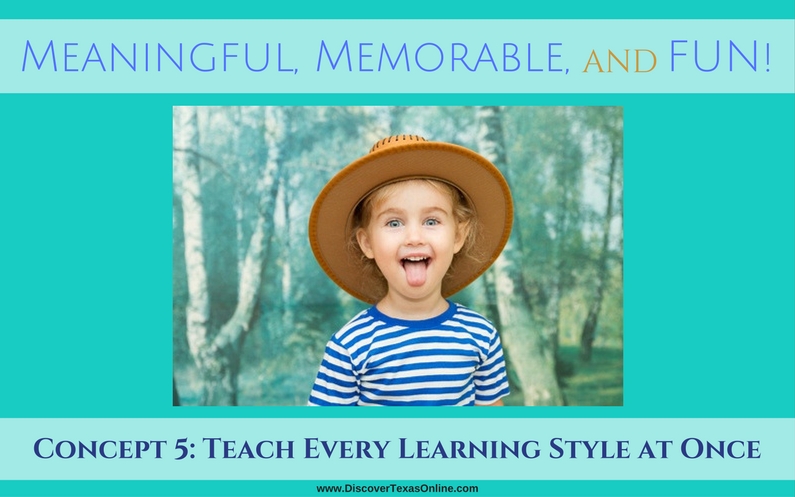This series of posts addresses the rationale behind my Homeschool How-To course How to Make Learning Meaningful, Memorable, and FUN! . . . coming in September. The first Homeschool How-To course How to Teach the Way Your Child Learns is available NOW! 🙂

In the last post, we discussed how each child participating in a real-life experience takes from that experience whatever is appropriate to their own age and abilities.
Similarly, real-life experiences allow each child to gravitate toward the activities that fit their learning style…which makes Mom’s job a whole lot easier!
Here’s how that worked in our family:
On a trip to a historical site…
Our visual learner looked at every display exhibited in the little museum at the entrance, reading each informational sign.
Once inside, our auditory learner stuck close beside the park ranger and peppered him with questions. (I’d understand if you have a child like this and have ever stood at a bit of a distance pretending you had no idea whose child that was. Not that I did that or anything…*wink*)
Our child who was still in his tactile learning stage poked around in the dirt, filling his pockets with rocks and acorns while hoping he might find an old coin. He wanted to go into all the rooms. We had to explain that he couldn’t touch the artifacts, but he enjoyed running his hand over the rough walls of the old building.
On the way home…
Your visual learner may make sketches of what she saw and what she imagined it must have looked like in the past.
Your auditory learner may repeat everything he remembers from the ranger’s tour and ask some really good questions that show you he really understood what happened in history and why.
Your tactile learner may be quiet, sorting through his treasures and commenting only that the stones on the house felt warm, but the stones on the well felt cool, and the moss that grew there was soft and fuzzy. Don’t be surprised, though, if this child re-enacts parts of the historical drama once you get home.
If you build in a time for each to share what they’ve learned in their own way, you’ll be amazed at how the whole group benefits from the shared perspectives!
When you teach every learning style at once, the what you experience together is often much richer than simply the sum of the parts.



